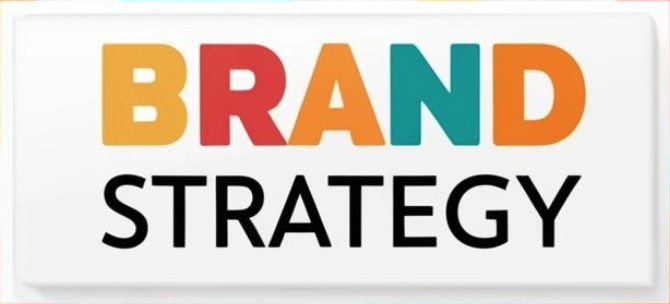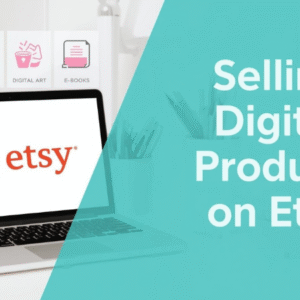Building a brand as an online course creator can feel exciting and a little daunting at times. The journey involves showcasing your unique style, sharing valuable knowledge, and making your course stand out among many others. In this article I share insights on how to build a brand that resonates with your target audience and sets you up for a successful online teaching career.
Turn Your Passion into Earnings
Get the Tools, Training and Support you need. All in One Place
Join a a Vibrant and Global Community of
Marketers and Entrepreneurs from Around the World
Key Ingredients for a Strong Online Course Brand
Branding for online course creators means more than just a logo or a website design; it involves creating a clear, recognizable identity that speaks to your audience. When you build a brand, you define who you are, what you teach, and how you communicate with potential students.
Every course creator wants their lessons to stand out and attract learners. By establishing a consistent brand message and design, you help potential students connect with you even before they sign up for a course. This approach builds trust and credibility over time.
There are several key ingredients to consider as you lay the foundation for your brand:
- Clear Value Proposition: Explain what makes your course unique and how it helps learners achieve their goals.
- Consistent Visual Identity: Use colors, fonts, and imagery that reflect your personality and expertise.
- Target Audience Knowledge: Understand who your learners are, what they need, and the problems they want solved.
- Authentic Storytelling: Share your journey, experience, and passion in a way that invites trust. Every detail matters when you are trying to connect on a personal level with your audience.
Getting Started With Your Brand Strategy
Before you build the perfect website or design eye-catching course materials, it’s important to map out a clear brand strategy. This strategy acts as a roadmap for your brand identity and marketing efforts, ensuring consistency across all channels.
Start by defining what makes your approach to teaching distinct. Here are some steps I have found useful when beginning this process:
- Define Your Niche: Identify your area of expertise. Whether it’s digital marketing, coding, creative writing, or another specialty, clarity helps attract the right students.
- Outline Your Mission: Think about why you teach and what you hope your learners will gain. A clear mission can differentiate you from others.
- Develop a Signature Style: Decide on the tone, colors, and style that will be used in all of your online platforms, from your website to course slides and promotional materials.
- Plan Your Message: Create consistent messaging that can be used on your website, in social media updates, and in email newsletters.
- Design Branding Assets: Invest time in designing a logo, a professional website, and perhaps even template graphics for your course materials.
These steps help clarify your identity and ensure you are conveying a consistent message across every interaction with your audience.

Common Challenges You Might Face
Every new venture comes with its own set of challenges. When building your brand as an online course creator, there are a few hurdles that can come your way. Recognizing these challenges early on can help you develop strategies to overcome them.
- Market Saturation: With so many course creators out there, it can be tough to stand out. Finding your unique angle and voice becomes key.
- Building Audience Trust: Gaining the trust of potential students often requires time and consistent value delivery. You may need to share free content to build credibility before asking for course registrations.
- Time Management: Balancing content creation, marketing, and customer engagement can stretch your time thin. Planning a schedule and setting realistic goals helps ensure you get everything done.
- Adapting to Trends: The online education market changes quickly. Keeping up with technology, marketing strategies, and student expectations is an ongoing process.
Overcoming Market Saturation
When you enter a crowded field, it’s wise to focus on what makes you different. Instead of trying to appeal to everyone, narrow your focus and deliver what you do best. This clear specialization can help attract your niche audience who are interested in exactly what you offer.
Building Audience Trust
Trust is not built overnight. It takes consistent effort. Regularly share updates and provide useful free content. This helps prospective students see your expertise and commitment to providing genuine value.
Time Management Strategies
Online course creation involves juggling many tasks. One approach I recommend is to break your activities into manageable chunks. Use content calendars and productivity tools to outline your tasks. This method helps in keeping track of deadlines and balancing your creative work with marketing.
Keeping Up With Trends
Online trends can shape how your course is received. Regularly check industry blogs, join communities, and attend webinars to stay informed about new tools and strategies. This habit ensures your brand remains relevant without compromising your authentic voice.
Remember, each challenge gives you a chance to refine your approach and improve your brand. With forward planning and practical tools, these hurdles can be overcome step by step.
Advanced Strategies for a Lasting Impact
Once you are comfortable with the basics of establishing your online course brand, jumping into advanced strategies can help further solidify your position. Building on the foundational elements, these advanced strategies add depth to your brand and step up your ability to connect with a wider audience.
Master Content Presentation: Experiment with creative ways to present your lessons. Incorporate interactive elements, engaging visuals, and clear, well-organized information. This keeps your audience engaged and encourages them to jump deeper into your content. It also allows you the space to explain complex ideas in a simple and accessible manner.
Use Analytics and Feedback: Regularly track engagement statistics and ask for feedback from your students. This data can inform adjustments in your teaching style and course structure. Over time, these refinements help create a more effective learning experience. Data-driven insights give you a better understanding of what works and what does not, ensuring continuous improvement of your course offerings.
Take Advantage of Social Proof: Encourage reviews and testimonials from satisfied students. Displaying these on your website and in your marketing materials builds trust with future candidates. Positive feedback and visible endorsements reassure potential learners of the quality of your course and your ability as an instructor.
Create a Community: Establish a forum or a social media group for your students. Building a community around your brand not only encourages word-of-mouth referrals but also provides a platform for continuous learning and engagement. A loyal community can be one of your greatest assets as it supports ongoing interaction and deepens brand loyalty.

Building Your Brand Toolkit: What Tools Should You Focus On?
Having the right tools in your branding toolkit can make a big difference in how professionally you present your online courses. Whether it’s setting up a website, managing your social media, or tracking your analytics, selecting the right resources can simplify your workflow.
Here are some key tools and platforms that many successful online course creators rely on:
- Website Builders: Platforms like WordPress or Squarespace offer customizable templates suited for course creators. These help you create a professional online presence without needing extensive technical skills.
- Email Automation: Using services like Mailchimp or ConvertKit can simplify how you communicate with your audience. Email newsletters, course updates, and promotional offers are essential to keep your audience engaged.
- Learning Management Systems (LMS): Tools like Teachable or Thinkific not only host your courses but also provide branding options that match your identity. A well-integrated LMS can streamline the student experience.
- Social Media Management: Apps like Buffer or Hootsuite help in scheduling posts and managing your online interactions. This ensures you maintain a consistent presence without feeling overwhelmed.
- Analytics Platforms: Tools such as Google Analytics provide insights into how users interact with your website. Tracking metrics is helpful in refining your marketing strategies over time.
Equipping yourself with these tools can save time and effort, allowing you to focus on creating impactful content and nurturing your brand.
Extra Tactics to Strengthen Your Online Presence
To truly refine your online course brand, it is very important to continuously expand your horizons and revisit your strategy. In addition to the core methods already discussed, there are extra tactics you can adopt to further amplify your presence. One effective approach is to incorporate regular content marketing. By publishing blog posts, articles, or even video updates on subjects related to your courses, you establish yourself as a thought leader. This not only helps in building trust with your audience, but it also fosters a strong connection with learners who are seeking reliable sources of information.
Another important tactic is to invest time in collaborations and partnerships. When you team up with other educators or influencers in your field, you open the door to fresh perspectives and expand your reach. These collaborations can involve co-hosted webinars, joint projects, or guest appearances on podcasts. Such partnerships often result in mutual growth and introduce your content to an engaged new audience.
Continuous learning and adaptation are also very important in the world of online education. Make it a habit to read industry publications, attend educational conferences, and join professional groups. When you consistently check in with emerging trends and ask for input from your community, you can refine your content and marketing approach to better serve your learners. Small adjustments over time can lead to significant improvements in the way your brand is perceived.
Moreover, integrating new technologies into your workflow can smooth the way toward a more efficient operation. Explore different digital tools that help you schedule posts, manage email campaigns, and track audience engagement. By studying the results and making quick changes where needed, you ensure that your branding efforts remain fresh and relevant. This proactive approach not only boosts your visibility but also reinforces your reputation as a modern, responsive educator.
Looking for a training platform that actually works?
I’ve put together a full walkthrough of the affiliate marketing training that helped me build everything I have today. It’s practical, beginner-friendly, and you can try it out for free to see if it suits you.
Take a look at my honest review and see if it’s the right fit for you.
Frequently Asked Questions
Here are some common questions about building a brand as an online course creator, along with clear answers that might help you on your ride:
Question: How do I begin building my brand if I am just starting out?
Answer: Begin by defining your niche and value proposition. Focus on creating a consistent message and visual identity that reflects your expertise. This creates a clear direction for all your future marketing efforts.
Question: What if I face stiff competition in my niche?
Answer: Stick to what makes you unique. Specialize in a subtopic within your field and tap into your personal experiences. Engaging content and genuine interaction with your audience can help overcome competitive pressures.
Question: Is it necessary to invest heavily in design and branding assets early on?
Answer: It helps to invest in quality branding materials, but focus on authenticity. Starting with a clear message and basic design guidelines is more important than spending a big budget right away. Over time, you can scale your investments as your brand grows.
Question: How do I maintain consistency across different platforms?
Answer: Develop a set of brand guidelines that lay out your color scheme, fonts, logo usage, and tone. Apply these consistently across your website, social media, and course materials.
Conclusion
Building a brand as an online course creator is more than just a one-time project. It is an ongoing strategy that evolves as you connect with your audience and refine your teaching style. A strong brand sets the tone for your digital presence and helps you build trust with your students.
The process begins with a clear value proposition, a deep understanding of your target audience, and a commitment to authenticity. With the right toolkit and advanced strategies, you will not only launch a successful course platform but also create lasting connections with learners who believe in your vision.
Start your journey today by outlining your unique strengths. Plan your strategy carefully and focus on consistent, clear communication. Your brand is a reflection of your expertise. Every step you take builds a legacy that goes well beyond individual classes. Bottom line, investing in your brand is investing in your future as an educator.
Let’s make it happen!





